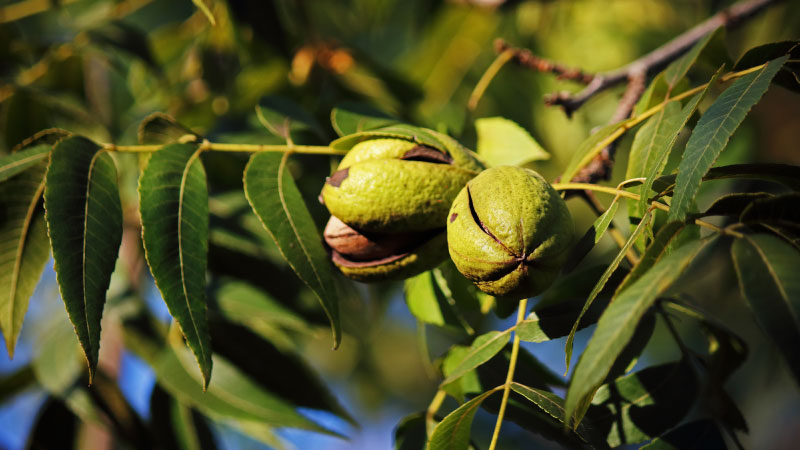4 Steps To Achieve Perfect Spray Coverage for Your Fruit and Nut Crops
The goal of airblast spraying is a uniform pesticide deposition of a known, prescribed pesticide rate throughout the entire target, the tree canopy. Done right the first time, a good spray job saves the time and money of a second spray plus income lost due to crop damage in the case of a poor first spray. In tough economic times, a second spray for the same problem may not be in the budget.
There are several steps to achieving this goal. Skipping any step will reduce spray efficacy and efficiency.
- The sprayer should travel at an appropriate speed to allow spray to reach the treetops. Too slow of a sprayer speed wastes time, too fast costs money in poor spray coverage in the treetops.
- Point larger nozzles at thicker canopy (more leaves and nuts). For most orchard crops, this means 65% to 80% of the spray flow (gallons per minute) should be applied through the top half of open nozzles.
- Measure gallons per acre sprayed and, using total spray tank volume, determine the amount of pesticide product to add to each tank to match your pest control adviser’s recommendation.
- Check coverage with water-sensitive paper placed in the canopy. Finally, spray mature (tall) trees when relative humidity is above 40% to limit droplet evaporation and allow good coverage in the upper canopy.
The first, ground speed, is absolutely critical. Airblast spraying uses air from the fan to distribute the pesticide throughout the tree. If the fan’s air doesn’t reach the treetops, the pesticide won’t either. Ground speed is a simple and effective way to adjust air movement through the canopy, especially between bloom and harvest when spray coverage is most challenging.
The sprayer should travel just fast enough so air from the sprayer’s fan reaches just above the tops of the tallest trees. To check this, at a time of day with little to no wind, tie a short length (18 inches) of surveyor’s ribbon to a section of PVC pipe or conduit and run the tubing up through the middle of a tree to a height just above the tallest trees in a planting.
RELATED CONTENT: Calibration Is ‘Super Critical’ To Superior Spray Function
With the sprayer fan on, drive the sprayer past the tree with the flagging at tractor and sprayer settings you think appropriate (for example, full sprayer air delivery and 2.25 miles per hour sprayer speed). If the flagging flutters out to 45° from the vertical as the sprayer passes the tree, the speed is appropriate for that planting at that time of the season.
If the flagging just barely moves, or doesn’t move at all, repeat the process with a slower tractor speed. If the flagging kicks up to the vertical (180° from dead hang), repeat the process at a faster tractor speed. Record the tractor and sprayer settings that deliver air movement from the sprayer fan to just above the canopy.
Calculate the acres per minute sprayed at that ground speed by multiplying ground speed (feet per minute) by the row width. Note: If spraying on a day with slight winds, drive more slowly to deliver more fan air to compete with the wind and better cover the upper canopy.










